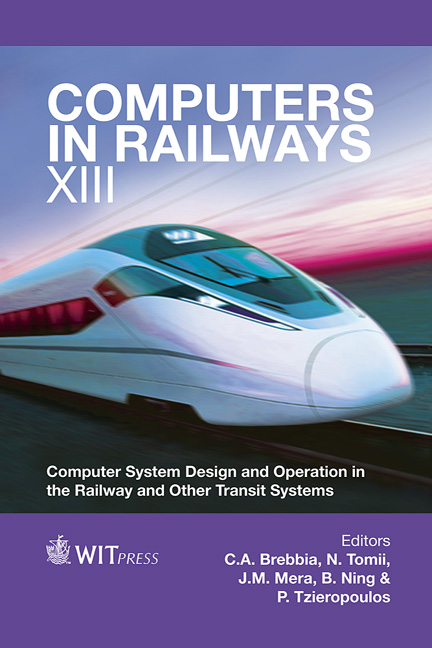Top Challenges Of LTE To Become The Next Generation Railway Communication System
Price
Free (open access)
Transaction
Volume
127
Pages
12
Page Range
85 - 96
Published
2012
Size
2,982 kb
Paper DOI
10.2495/CR120081
Copyright
WIT Press
Author(s)
J. Calle-Sanchez, M. Molina-Garcia & J. I. Alonso
Abstract
Railway environments cannot be away from the current evolution of public communication systems. The Long Term Evolution (LTE) mobile communication system is considered to be the natural evolution for current Global System for Mobile Communications Railways (GSM-R). LTE all IP networking technology plays a key role for the integration and convergence of heterogeneous networks and services, both the specific for the railway operative and the commercial broadband ones for passengers. The adoption of a new generation standard for railway communication must be based on an exhaustive feasibility study of the new system to become the railway mobile communication system. In this paper, LTE’s top challenges to address the specific requirements and features of railway communication services are evaluated. Under this scope, LTE features to implement the required railway functionalities, LTE technical challenges, spectrum harmonization, network deployment considerations and LTE capabilities to meet the railway service Reliability, Availability, Maintainability and Safety (RAMS) requirements, are assessed. Keywords: LTE, high speed railway, VoLTE, LTE features, RAMS, challenge assessment.
Keywords
LTE, high speed railway, VoLTE, LTE features, RAMS, challenge assessment





